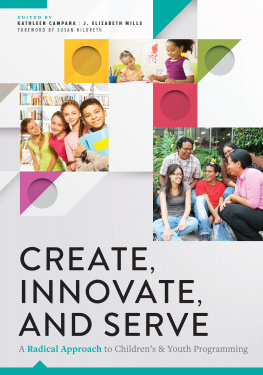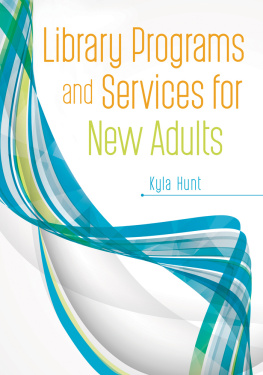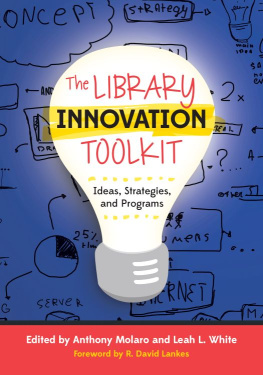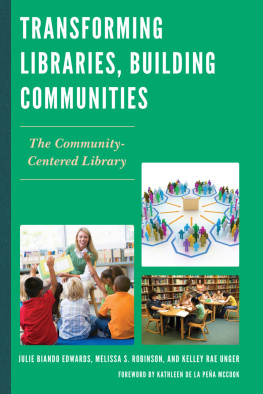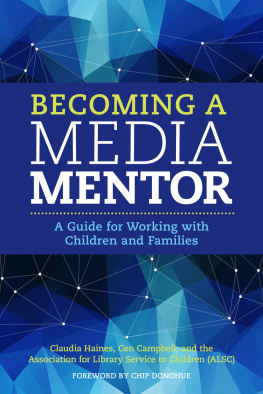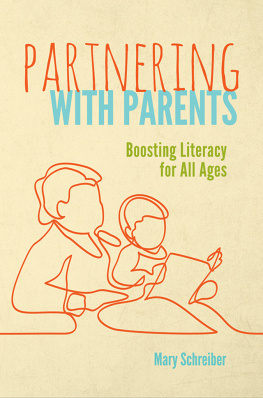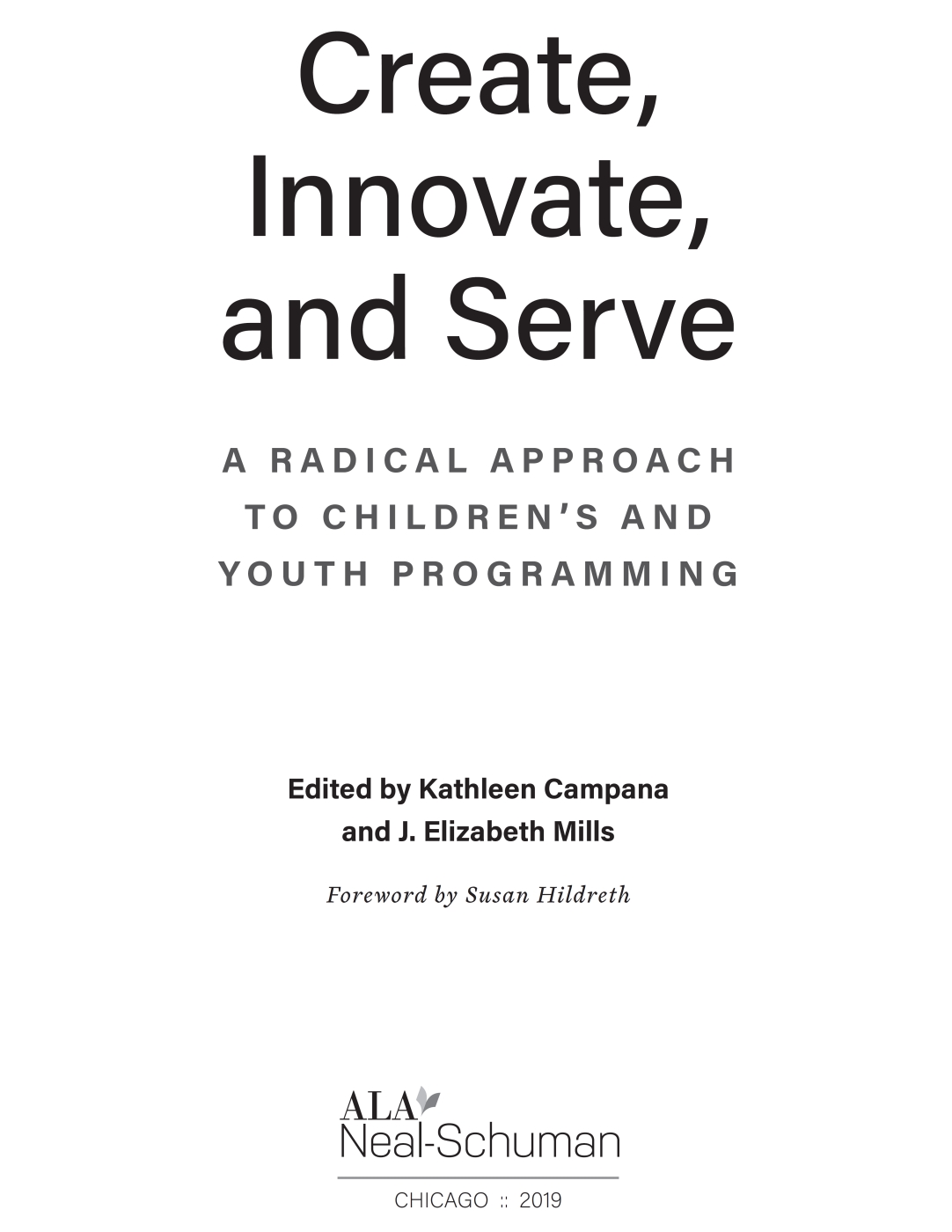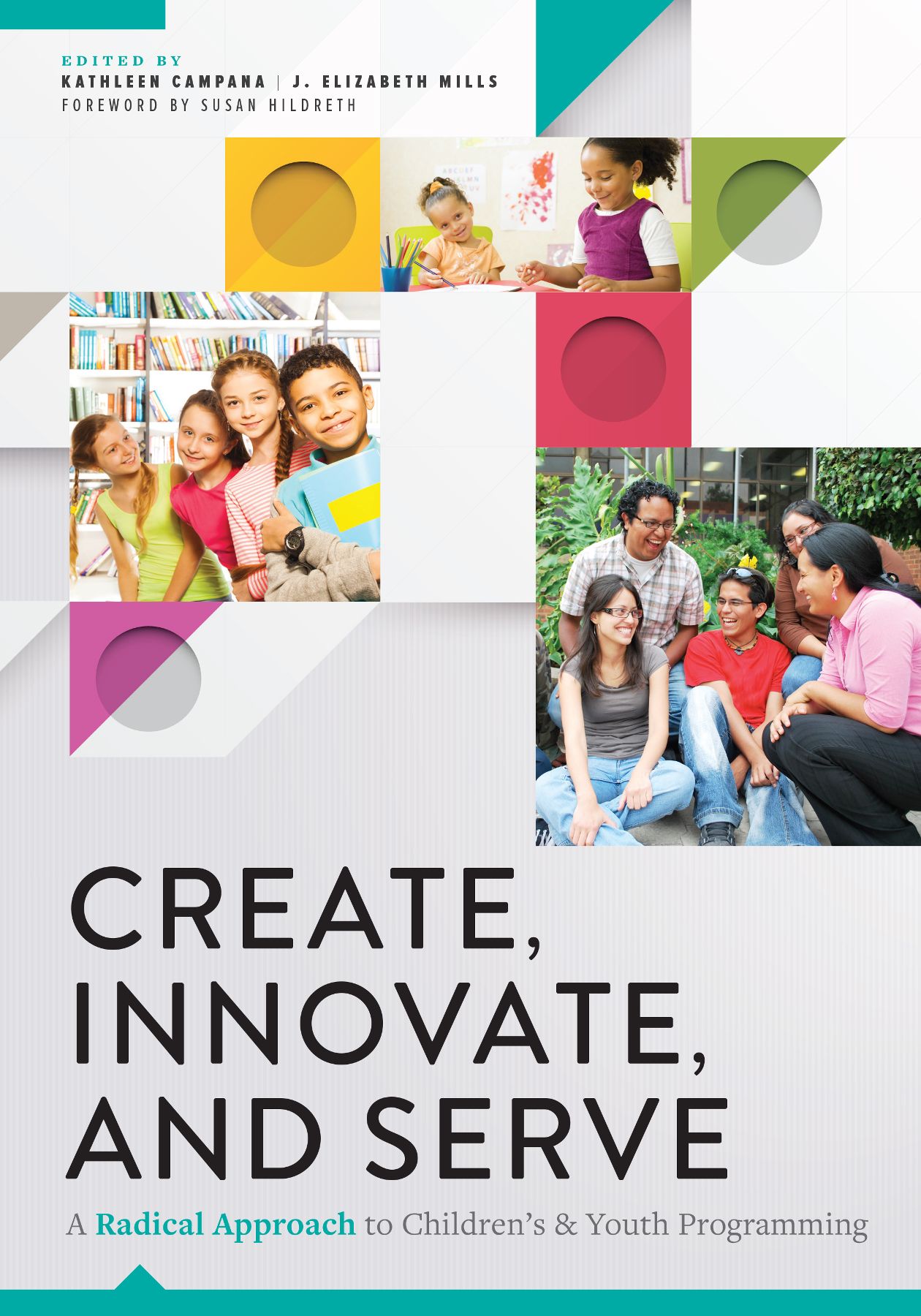
ALA Neal-Schuman purchases fund advocacy, awareness, and accreditation programs for library professionals worldwide.
ADVISORY BOARD
Heather Dickerson, Teen Services Librarian, Lewis and Clark Library (Montana)
Sandra Hughes-Hassell, PhD, Professor, School of Library and Information Science, University of North Carolina at Chapel Hill
Kendra Jones, District Manager, Youth and Family Services, Timberland Regional Library (Washington)
Robin Kurz, PhD, Writer and Independent Consultant
Tess Prendergast, PhD, Adjunct Professor, The iSchool, University of British Columbia
2019 by the American Library Association
Extensive effort has gone into ensuring the reliability of the information in this book; however, the publisher makes no warranty, express or implied, with respect to the material contained herein.
ISBNs
978-0-8389-1720-6 (paper)
978-0-8389-1797-8 (PDF)
978-0-8389-1796-1 (ePub)
978-0-8389-1798-5 (Kindle)
Library of Congress Cataloging-in-Publication Data
Names: Campana, Kathleen, editor. | Mills, J. Elizabeth, editor.
Title: Create, innovate, and serve : a radical approach to children's and youth programming / edited by Kathleen Campana and J. Elizabeth Mills ; foreword by Susan Hildreth.
Description: Chicago : ALA Neal-Schuman, An imprint of the American Library Association, 2019. | Includes bibliographical references and index.
Identifiers: LCCN 2018037982| ISBN 9780838917206 (paper : alk. paper) | ISBN 9780838917961 (epub) | ISBN 9780838917978 (pdf) | ISBN 9780838917985 (kindle)
Subjects: LCSH: Children's librariesActivity programs. | Children's librariesActivity programsUnited StatesCase studies. | Young adults' librariesActivity programs. | Young adults librariesActivity programsUnited StatesCase studies.
Classification: LCC Z718.3 .C74 2018 | DDC 027.62/5dc23 LC record available at https://lccn.loc.gov/2018037982
Cover design by Alejandra Diaz. Images Adobe Stock.
CONTENTS
Susan Hildreth
Jamie Naidoo
Annette Y. Goldsmith and Michelle H. Martin
Sarah Ward and Sarah A. Evans
Amy Koester and Claudia Haines
Melissa Gross
Beth Crist
Judy T. Nelson
Young Children (Ages Birth to Five)
J. Elizabeth Mills, Kathleen Campana, Emily Romeijn-Stout, and Saroj Ghoting
Susan Anderson-Newham
Melissa Depper and Lori Romero
Sarah Stippich and Christine Caputo
Mariko Whelan
Kathleen Campana and Betsy Diamant-Cohen
Middle Childhood (Ages Six to Twelve)
R. Lynn Baker
Elizabeth McChesney
Cristina Mitra
Diane Banks and Peggy Thomas
The Dream Team
John Marino
Teens (Ages Thirteen and Up)
Sarah A. Evans
Corey Wittig and Kelly Rottmund
Sara White
Jess Snow, Ally Dowds, and Catherine Halpin
Gabbie Barnes
Denise Agosto
THE LIBRARY AS COMMUNITY ANCHOR
An Opening Perspective
Susan Hildreth
T he public library has fulfilled many different roles during its existence. These roles have been informed by the needs of the community the library serves. The current concept of library as community anchor stems from the 2010 National Broadband Plan that identified libraries, schools, and hospitals as critical providers of broadband access. The important role that libraries play in providing access to public computing has been well-documented, and the inclusion of libraries with schools and hospitals as on-ramps to the information superhighway has lifted libraries from their previous nice to have status to need to havethey are essential for healthy communities. Yet the public librarys role as community anchor reaches far beyond supplying high-speed broadband to creating a platform that facilitates people acting individually and in groups in support of knowledge and community.
The role of the public library as community anchor has been clearly articulated in recent library literature. In Creating a Nation of Learners: Strategic Plan 20122016, the Institute of Museum and Library Services (IMLS 2014a) identifies libraries as strong community anchors that enhance civic engagement, economic vitality, and lifelong learning. Healthy communities require institutions that strengthen civic life, respond to community needs, and provide opportunities for community members to learn together through common experiences and shared interests. Libraries advance solutions to their communities most difficult problems by providing safe places for the community to gather, centers for community vitality, a connecting point to community services, and a venue for lifelong learning. Library services and programs are designed to encourage the participation and dialogue that are crucial to create a sense of place and to strengthen the link between individuals and their communities.
In the Aspen Institutes report, Rising to the Challenge: Re-Envisioning Public Libraries (Garner 2014), the successful twenty-first-century library is described as an entity with three critical componentspeople, place, and platform. Although the library as community anchor is integral to both the place and platform components, with the platform clearly aligned with the librarys virtual space, the library as place anchors it most firmly in the community. The iconic physical presence of the library represents a key gathering point for access to knowledge, learning, and the spirit of the community. As noted in the Aspen Institute Report, libraries as community anchors provide many services that are unique and valued by their users and political advocates:
- Establish personal connections that help define community needs and interests.
- Provide an anchor for economic development and neighborhood revitalization.
- Strengthen community identity in ways that yield significant return on investment, including drawing people together for diverse purposes.
- Provide a safe and trusted location for community services, such as health clinics, emergency response centers, small business incubators, workforce development centers, and immigrant resource centers.
To be successful in fulfilling the community anchor role, libraries must explore, understand, and value the priorities of their communities. Aligning library services with community goals, one of the most critical strategies for success (Garner 2014), is essential to effectively serve communities and gain the support of policy-makers. Librarians no longer can provide collections or services that they personally believe are best for the community. All programs, collections, and services must be driven by the priorities of the community. Even if those priorities may not to be directly related to the traditional mission of the library, it is the critical role of the twenty-first-century librarian to determine how existing or new resources can be organized and promoted to support the key priorities of the community.
By embracing its role in civic engagement, the library can identify those critical community priorities that are crucial to serve as a successful community anchor. The library is uniquely positioned to serve as the community convener that identifies local challenges and brings together participants to address those challenges. The library is a trusted institution with easy access to information that can discuss community issues. It can provide a physical space and a safe environment for dialogue on potentially contentious issues. This is a role that libraries must take on purposefully because it will require library staff to become skilled in facilitating challenging conversations. In an era when civil dialogue is fast disappearing, it is critical that libraries move into the civic-engagement space. More than any other institution, libraries have the potential to succeed in this special niche.
Next page
